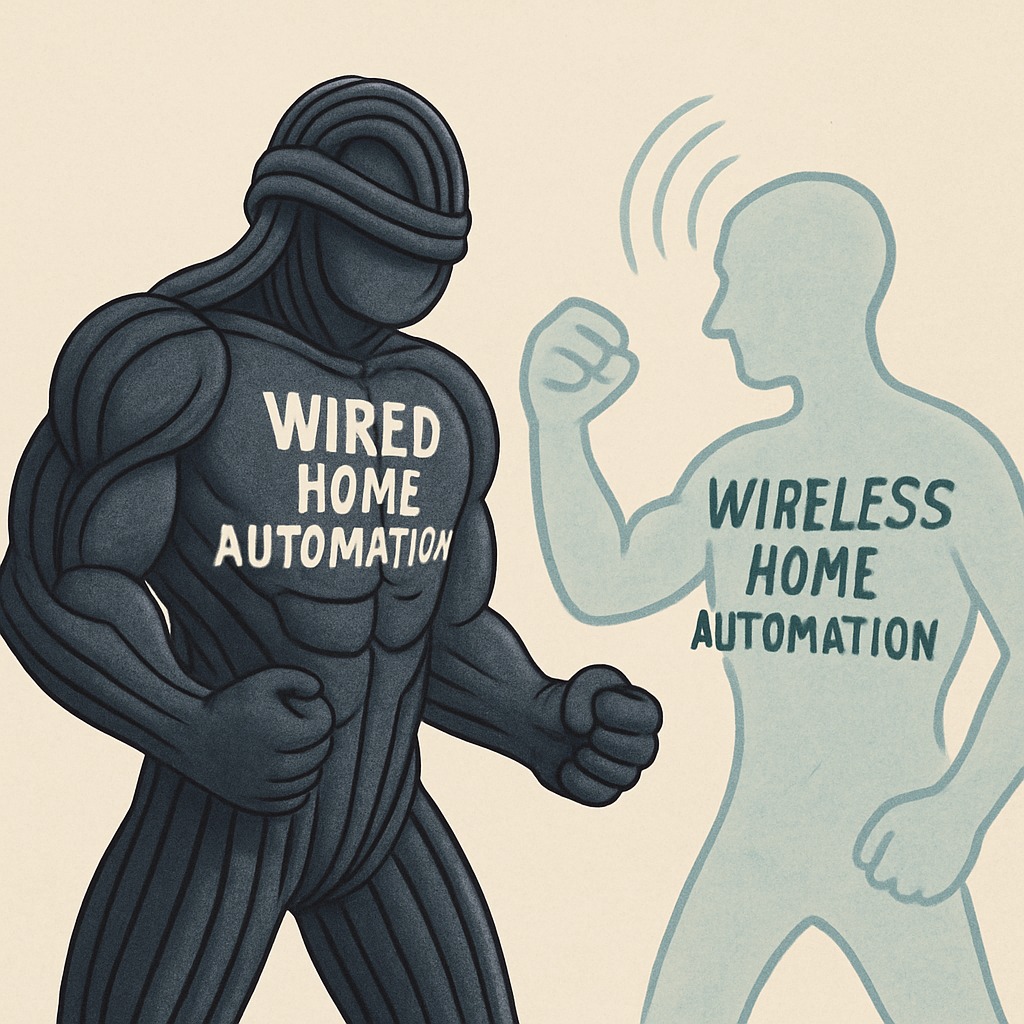Wired vs Wireless Home Automation: Which One is Right for You?
When it comes to home automation, one of the most common questions people ask is:
“Should I choose a wired system or a wireless system?”
The truth is, there’s no one-size-fits-all answer. Both solutions have their advantages and disadvantages, and the right choice depends on your project, lifestyle, and budget. Let’s break it down:
1. Foundation and Installation
Wired Systems:
Require planning during the construction or renovation stage. They need dedicated cabling (such as KNX cables) and professional installation by a specialized company.
Wireless Systems:
No need for major construction work. They can be installed in fully finished homes, making them a flexible and convenient option.
2. Stability and Performance
Wired Systems:
Highly stable and reliable. Devices communicate through dedicated cables, ensuring instant response and zero interference—like using an Ethernet cable instead of Wi-Fi.
Wireless Systems:
Depend on radio signals (Wi-Fi, Zigbee, Z-Wave, etc.). While easier to set up, they may face challenges like weak Wi-Fi signals, thick walls, or interference from other devices.
3. Cost
Wired Systems:
Generally more expensive due to cabling, panels, and installation. But they offer long-term reliability and scalability.
Wireless Systems:
More affordable upfront, with easier upgrades. Perfect for smaller budgets or quick installations.
Conclusion
If you’re building a new villa or apartment and have a flexible budget, a wired system is the most reliable, future-proof choice.
If you already live in a finished property or want a fast, cost-effective solution, a wireless system may be the right option.
At the end of the day, the best system is the one that fits your needs, lifestyle, and budget.

